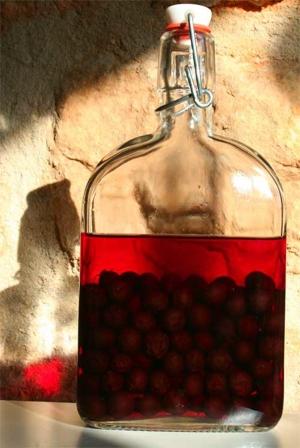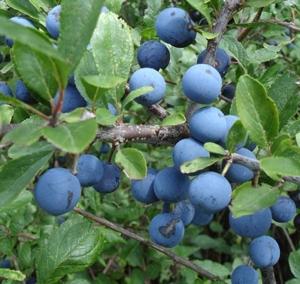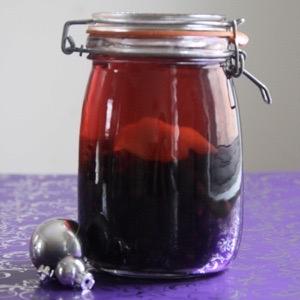The Green Gardener
How to Make Sloe Gin
My first introduction to sloe’s came when helping my father to make his sloe gin, which was an annual thing in our house, to be done after the first frost each and every year without fail.
I had to laboriously prick every tiny berry several times with a pin, before throwing it into a large kilner jar with what seemed like millions of other dry and bitter sloes. Needles to say my young, spindly fingers also suffered the same pain that the sloe berries went through!

My father would then cover the berries with sugar and gin, leave the jar to gather dust for several years before bringing out on special occasions. At that age I definitely did not understand the appeal.
My young tastebuds didn’t quite grasp the concept of drinking a sugary, floral, ruby red liquid, to me it was almost like blood. When forced to try the previous batch I would hastily look for the nearest pot plant to dispose of my ghastly gulp of bitter berry infused gin.
Nowadays of course, being that little bit older I can now truly appreciate and willingly help sample any batch of sloe gin, yes any!! The more the merrier...hic-up hic-up!
Not everyone is familiar with the sloe berry, it is the fruit of the blackthorn tree, but be careful, it is not pleasant to eat straight from the bush.
How to find sloes

Look out for blackthorn bushes, a thorny bush which has dark foliage and dark skin. Blackthorn can be found in hedgerows, parks, woodland and scrubland.
Blackthorn will grow in most types of topsoil, so if found throughout the UK. The small purple fruits about the size of a small marble will grow in early Autumn and will look almost dusty in it’s appearance.
When to find sloes
My father always taught me to pick them after the first frosts, however sometimes if there are huge quantities growing, which this year there are, you can pick between September and November.
How to pick them
Make sure you protect yourself with gloves and not rubber ones either! Blackthorn bushes have very long and sharp thorns. If you are searching quite hard for the berries (trust me it’s worth it) you may want to make sure you are wearing quite thick trousers. Take with you a container. You wont need scissors or secateurs simply pull them off by hand.
What now
Now you have your sloe berries you can make various alcoholic drinks, jellies and even sloe chocolates. If you can’t use them straight away then you can freeze them until you can.
If you pick them before a frost you can also freeze them, this will elevate having to prick every tiny berry with a pin by hand! And of course sore fingers!
Here is the classic Sloe Gin Recipe

Ingredients
- Kilner Jar 1000ml or more capacity
- Gin (of course)
- Granulated sugar
- Colander
Preparation
- Washed your sloes thoroughly, removing any leaves or debris and any sloes which do not look fit and healthy.
- If you have frozen the sloes then pop these into a jar, if you have not frozen them then you will need to prick them with a pin or something sharp. Just 2 or 3 times per berry I find most effective.
- Fill your jar half way to 2/3rds with sloes and then put enough sugar in to cover the berries. Then fill the jar with gin.
- Tightly secure a lid onto the jar and turn once a day until the sugar has fully dissolved, then leave the jar for at least 3 months. The longer you can resist the better the sloe gin will be.
- Finally strain the sloes off from the Sloe Gin and bottle.
I have had some for over 5 years and it tastes really good.
Check out our other garden / hedgerow boozy delights
